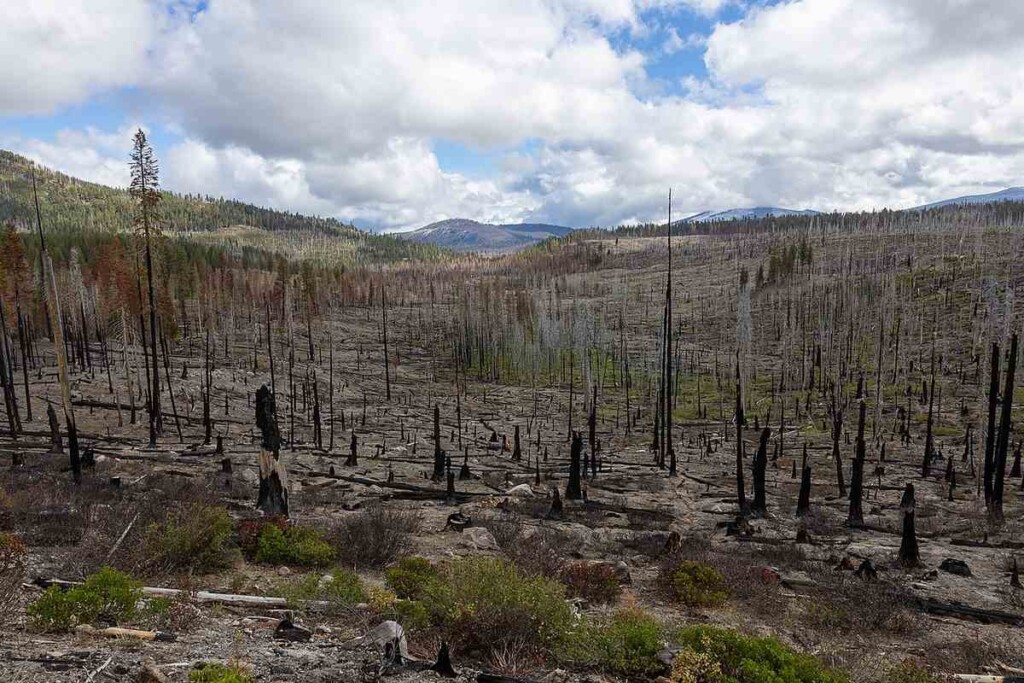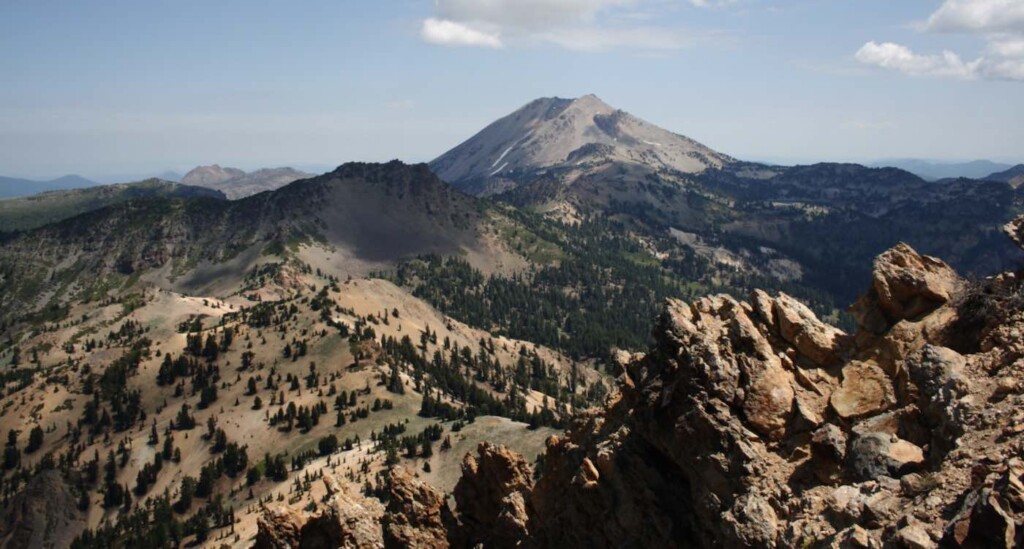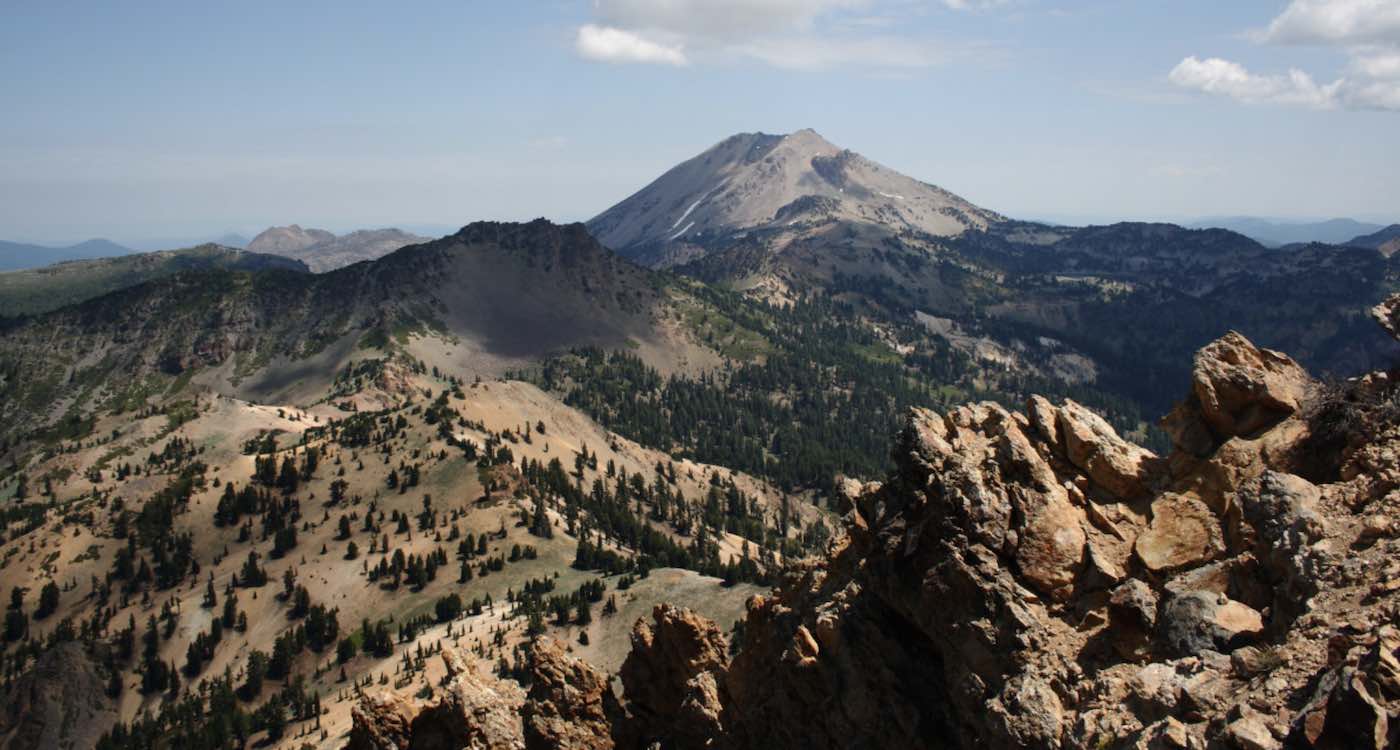
The Dixie Fire of 2021 was the largest single blaze in California’s history, but even this human-accelerated firestorm couldn’t tamp down the resilience of nature.
In August, it devastated Lassen Volcano National Park in Northern California, leaving parts of it reminiscent of “Mordor” yet in a feature piece from The Guardian, it’s clear nature is just a few steps behind restoring what was torched.
As the Dixie Fire came closer and closer to this remote National Park that receives only around 500,000 visitors a year, rangers, Forest Service employees, and firefighters strategized how to protect small communities living near the park as well as the park’s infrastructure.
A variety of controlled burns—used for centuries by Native Americans to reduce the risk of wildfires having too much dead and dry wood and scrub to burn—were set in vulnerable forests. Earth-moving equipment left bare earth surrounding the Kohm Yah-mah-nee visitor center.
In the moments before the Dixie Fire arrived, firefighters lit their own fires around key areas, perhaps hoping to consume the oxygen in the area just before the immense flames could use it to spread.
Their efforts paid off—the historic towns of Mill Creek, Mineral, and Old Station were all unscarred, and so was the Kohm Yah-mah-nee visitor center.
As for the rest of the park, the devastation that saw whole forests reduced to blackened stumps and toothpicks shocked visitors; but not the staff. Lassen Volcano was enshrined as the nation’s 17th national park after the eruption of the volcano in 1915 which saw incredible destructive forces unleashed on the forests there.
A land of changes
Between May 14th and 22nd, the southernmost volcanic peak in the Cascades Range sounded off a series of eruptions, including more than 180 steam explosions that blasted out a 1,000-foot-wide crater on the peak. The next day, Incandescent blocks of lava could be seen bouncing down the flanks of Lassen from as far away as the town of Manton, 20 miles to the west.

According to the USGS, more steam explosions sent lava blocks flying onto a snow-covered slope which trigged an avalanche that wiped clean 4 miles of mountain terrain to the northeast, while a mudslide also triggered by meltwater from the lava devastated 7 miles of terrain to the northwest.
On May 22nd, the largest eruption sent a huge column of volcanic ash and gas more than 30,000 feet into the air, visible from as far away as Eureka, 150 miles to the west.
Pumice falling onto the northeastern slope of Lassen Peak generated a high-speed avalanche of hot ash, pumice, rock fragments, and gas, called a pyroclastic flow, that devastated a 3-square-mile area. The pyroclastic flow created another mudslide that followed the path of the previous one and rushed nearly 10 miles down Lost Creek to Old Station. This new mudslide released a large volume of water that flooded lower Hat Creek Valley a second time.
MORE GOOD DISASTER NEWS: Remarkable Man Averts Oil Tanker Disaster by Crowdfunding to Remove Crumbling Ship From Red Sea
When the mountain finally quieted back down, the result was, much like Dixie, a Mordor-like landscape.
“People say: ‘I’ve never seen it like this my entire lifetime that I lived here.’ In my lifetime, it’s all I see,” Park Ranger Russell Rhoads told The Guardian following the recent devastation. “Fire was suppressed during your entire lifetime, the fuels accumulated and now it’s just unmanageable.”
24 months and change since the Dixie Fires burned through, and parts of the landscape can be seen exploding with new growth. Pines that require fire to release their seeds are sprouting from the blackened Earth, and fields of wildflowers and native grasses cover hillsides of ravaged trees.
MORE GOOD NEWS AFTER DISASTERS: Texas Oak Tree Thought to Be Extinct Discovered in Big Bend National Park
Among the stumps and logs, seemingly devoid of life, rotting wood is home to grubs, beetles, and mushrooms, all of which provide food for woodpeckers, bears, and other animals.
Rhoads explained that the whole ecosystem of Lassen was birthed by fire and devastation, and has recovered many times over the eons. It may take a decade or more, but soon the Dixie Fires will just be a brief chapter in the region’s long history of change, destruction, and rebirth, while for the National Park Service, it was a proving ground for important firefighting strategies to employ for future wildfires.
SHARE This Inspiring Story Of Renewal And Resiliency Of American Nature…




















